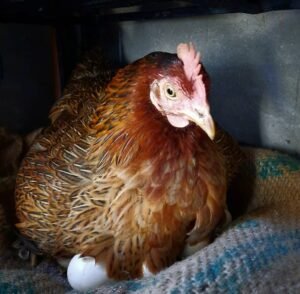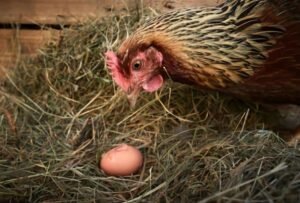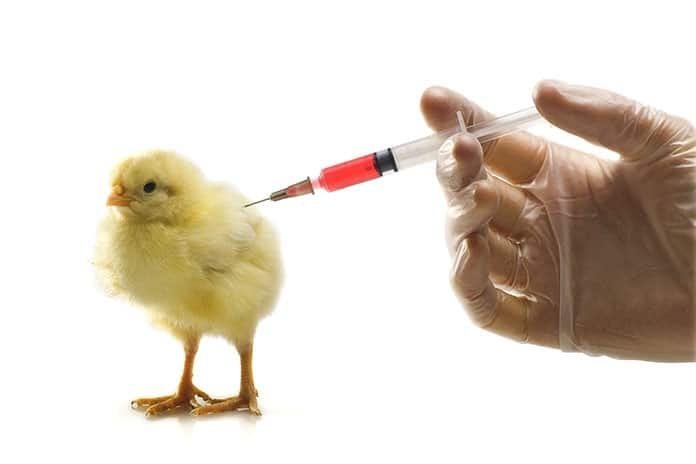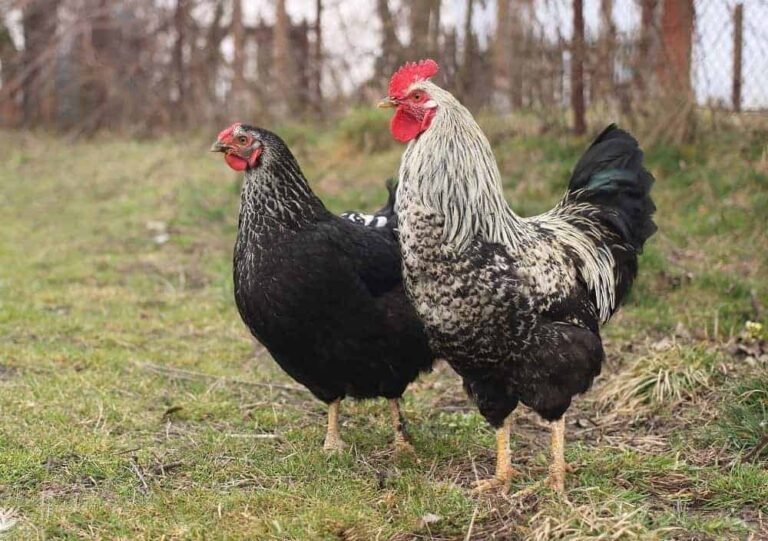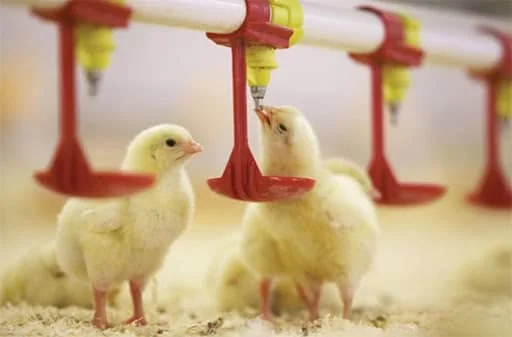Marek’s Disease; Causes, Symptoms, Treatment and Prevention Tips

If your birds are underperforming or suffering from paralysis, then it’s possible they have Marek’s disease.
This is a very chronic disease that can destroy your poultry farm, hence you need to prevent that from happening.
In this article, you will learn how to identify Marek’s disease in your flock and what you need to do to prevent it from spreading.
So, if you want to learn more about this disease, its symptoms and how to care for sick birds, then continue reading till the end.
What is Marek’s disease?
Marek’s disease is a very common disease in the poultry farm which affects birds of any age.
It is a chronic disease commonly known as fowl paralysis in the backyard and commercial poultry farms.
Various health issues arise when birds get this disease and begin to show signs of having the Marek disease virus.
This disease was named after Josef Marek, a Hungarian pathologist who described Marek disease in 1907.
Sometimes the effects can be a bit as mild as loss of weight to extreme conditions and even leading to deaths in your flock.
This depends on how virulent the virus strain is, that is, how extreme and malicious such viruses are.
As such, you must do all that you can to prevent Marek’s disease from entering your flock.
Though this disease is lethal during outbreaks, it happens to be easily preventable within the coop before an outbreak.
It is a highly infectious disease that spreads rapidly among unvaccinated birds.
Although Marek’s disease cannot affect man, man can be a carrier that spreads the virus on the farm.
What are the causes of Marek’s disease and how does it spread?
The cause of Marek’s disease is an alpha herpes virus which is known as Marek’s disease virus (MDV) or Gallid alphaherpesvirus 2 (GaHV-2).
The viruses have three known serotypes with different virus strains.
Serotype 1 viruses are oncogenic and they cause visceral tumours in the birds.
Serotype 2 and 3 viruses are not as virulent as type 1 and they are used in making vaccines.
The serotype 1 virus is also used to make vaccines but it needs to be well suppressed, having no force at all.
The visceral type usually occurs between 16-35 weeks, forming tumours in various organs inside the body.
You should know that the two basic factors that determine the extent of harm Marek’s disease causes are;
The type of virus strain that hits your flock and the breed of chickens you are keeping in your farmhouse.
They both tell how much damage the Marek Disease Virus will do to your poultry birds.
Some common chicken breeds like the silkies, leghorns, and egg type breeds are known to be very much vulnerable to the disease.

How is Marek’s disease transmitted?
Marek’s disease virus is an airborne disease that can be easily transmitted within the flock.
It spreads through contaminated litter, food, dust, fluffs and contact with infected birds or objects.
Mostly the feather follicles and dead skin shed by the birds are richly ladened with MDV.
Even workers on the farm are easily a carrier as it sticks on their clothes, shoes, skin and hair when they visit infected flocks.
Besides, the dander(scaly white dead skin flake) of infected birds can fall anywhere and also, carried by air around the coop spreading the virus and infecting the others.
Since infected birds shed the virus for life, new or unvaccinated birds within or around the flock will catch the virus too.
It takes a period of 2 weeks for the disease to develop and incubate in its new host and clinical signs of infection from 3-6weeks.
Remember, not every infected bird will show symptoms of or the syndrome of this Marek’s disease and get sick.
Hence, be sure to know the disease history in your locality as it helps prepare you for possible disease outbreaks.
And prepare a very good vaccination schedule for your layer and broiler chickens While maintaining very good hygiene practices on the farm.
What are the symptoms of Marek’s?
The possible signs which birds infected with Marek’s disease virus (MDV) show depend on the tissue attacked.
Here you have a list of symptoms shown by birds with MDV
1. Immunosuppression in poultry birds:
One of the first clinical signs of the Marek’s disease virus is to actively suppress the immune system of affected birds.
The virus subdues their body’s response to foreign substances and pathogenic organisms wanting to invade.
They attack organs and tissues like the spleen, thymus, lymph nodes and bone marrow which all produces antibodies against various diseases.
As a result, it weakens the immune system of the chickens, thereby making room for other smaller diseases to begin to show up.
Over time, affected chickens become more susceptible and start looking pale and weak.
Poor poultry management practices and stress can also cause immunosuppression in chickens.
2. Paralysis of the wing and legs:
The Marek’s Disease Virus usually affects the nervous system of chickens a few hours after their incubation period.
The virus causes lameness and paralysis amongst birds in a flock.
There’s a partial or complete loss of voluntary controls of the chicken wings and legs
In some other conditions, the disease also causes paralysis of the neck of the birds and their combs collapse.
Paralysis in chickens is also a symptom of a wide variety of diseases such as Newcastle disease, botulism, (toxins from improperly prepared food) etc.
However, performing a post mortem on the infected bird will tell exactly if the disease is MDV.
So, if you suspect that your birds have the Marek Disease Virus contact your local vet immediately for advice and vaccination procedures.
3. Poor performance of birds:
Marek’s disease also affects the performance of birds negatively.
Broilers affected show much reduction in their weight gain and become less lively.
Layers with Marek Disease Virus produce fewer eggs and sometimes malformed eggs with no shell or bad content.
Also, the birds often show no interest in eating as they often lose their appetite for food.
They become so weak and sickly from not eating and catching the virus.
4. Blindness in affected birds:
Chickens have great eyesight sensible to small light fluctuations that we hardly notice.
Their big eyes are monovision meaning they work independently and see more colours than we do but they have very terrible night visions.
Unfortunately, blindness gradually manifests through Greyish Iris and irregular pupils in birds affected with Marek’s disease.
Their sight begins to weaken and they become Visually impaired as it grows worse.
5. Visceral tumors in the internal organs:
This symptom is rather unique to the Marek Disease Virus and it’s mostly caused by the virulent serotype 1 virus.
Internal organs of birds with this virulent type grow neoplastic tissue.
This means that they develop abnormal new growths of disorganised tissues which form up into a tumour on various internal organs.
One of Marek’s disease virus post mortem signs is the Inflammation of the Spinal column and brain of the bird.
Various other internal organs and tissues affected by the tumours are the liver, kidney, ovaries, lungs, heart, nerves, gonads and skeletal muscles.
You will find these tumours even on the skin of affected birds in some cases.
6. High Mortality rate:
In a flock that has the virus, the death rate of the birds tends to increase rather than expected.
A suppressed immune system becomes more prone to other pathogens and infections.
Also, the tumours can bring about internal lesions and are quite malignant.
Hence, MDV reduces the lifespan of any bird it infects in your flock and raises the mortality rate.
What are the preventive measures in handling the spread of Marek’s disease?
Some of the measures that you must take to stop the spread of Marek’s disease included improved biosecurity, maintaining good hygiene and vaccination of birds.
Also, you need to ensure that your poultry house is always clean even before the arrival of the birds to the farm.
Likewise, you need to ensure that you vaccinate the birds when they just hatch or better still, inject the eggs precisely before hatching.
Another method of vaccinating chickens is the In Ovo vaccination which is a more preferable method.
That is because it doesn’t require the handling of the chicks.
Everything in this method of vaccination is automated and immunity develops within two weeks.
Vaccination against the virus helps the chicks to start building resistance to Marek’s disease.
Hence, reducing the chances of coming down with the diseases even though they might still be carriers of the disease.
Vaccination does not prevent birds with the virus from shedding it although the amount is well reduced.
Also, you need to reduce the exposure of your birds to diseases by using correct stress management and proper sanitation.
In cases where there’s already an outbreak before vaccination, watch the flock closely to prevent further spread.
Also, clear and disinfect the poultry house all over after clearing the birds from the farm.
What are the possible treatments for Marek’s disease?
Just to keep it simple, there’s no known treatment for the Marek Disease Virus.
For now, there are no drugs for the direct treatment of Marek’s disease.
But scientists are working towards breeding genetically resistant birds to the virus strain.
The use of vaccines and keeping good hygiene in the poultry farm helps check and control the disease to some extent.
Frequently asked questions about Marek’s disease
Can chickens recover from Marek’s disease?
There’s no full recovery from a virus without treatment.
The best thing to do is to prevent the disease from infesting your flock as prevention is even better than finding a cure.
Once a bird has the MDV disease, it stays with the bird for life, although the symptoms don’t start showing immediately.
Can humans get Marek’s disease from chickens?
I’ve just mentioned earlier that Marek’s disease is not zoonotic.
We could easily be carriers of such disease as it’s airborne and sticks to different surfaces.
Yet, it doesn’t affect a man and causes no clinical signs.
This means that it is not a virus that can infect humans and cause harm or make us sick.
Can a vaccinated chicken get Mareks?
The chances of a well-vaccinated flock are very minimal.
This is because the main function of the vaccine is to prevent the birds from getting the virus.
MDV Vaccines build the immune system and help it develop resistance to the virus.
Sometimes, a more virulent virus strain overcomes the bird’s immunity and still infect it, that’s only in rare cases.
How long will a chicken live with Marek’s?
The lifespan of Chickens infected by Marek’s disease depends on the type of virus strain that has infected it and the breed involved.
Infections might have happened at a younger age while the symptoms begin to show at a much later time.
Conclusion
Marek’s disease is a common disease in poultry farms also known as fowl paralysis.
Chickens affected by this virus show a variety of symptoms including loss of weight, depression, poor performance and paralysis.
Other common symptoms are immunosuppression, vision impairment, blindness, and an increase in the flock’s mortality rate.
There’s currently no cure for this virulent virus but vaccines and good hygiene practices have helped check the virus.
References
- 12 Best Chicken breeds for Eggs – chicken breeds for eggs
- When Do Chickens Start Laying Eggs Regularly?
- How Many Eggs Does A Chicken Lay In A Week?
- Fermenting chicken feed – The definitive guide
- 10 Sure Ways To Stop Chickens from Eating Their Eggs [+Bonus]
- 6 Best Chicken Egg Incubators for Chicken Eggs and Other Birds
